
The Newcastle Gaol Museum is a prison museum on Clinton Street in Toodyay, Western Australia, founded in 1962. The museum records the history of the serial escapee Moondyne Joe and his imprisonment in the "native cell".

The Pensioner Guards were English military personnel who served on convict transportation ships en route to the Swan River Colony between 1850 and 1868, and were given employment and grants of land on arrival. Their initial employment lasted for six months, or the duration of the voyage, whichever was the longer time. After this they became "pensioners" and had to serve 12 days per year as well as whenever called upon. They paraded annually in Perth at the Pensioner Barracks. Part of their purpose was to fulfil a promise by the British government to send free settlers to the colony to dilute the convicts, and to maintain law and order in the colony.
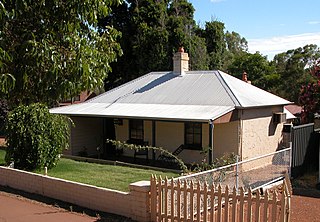
Kirk's (Pensioner) Cottage on Stirling Terrace in Toodyay, Western Australia was built between 1852 and 1856 by convict labour.

Toodyay Manor on Stirling Terrace was originally the Newcastle Hotel in Toodyay, Western Australia.

James Martin's cottage is located on Stirling Terrace in Toodyay, Western Australia.
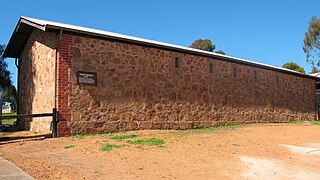
The Newcastle Police Stables on Clinton Street in Toodyay, Western Australia were constructed in 1891 and replaced the original timber stables erected on this site in 1860, which were destroyed by fire.

The Freemasons' Hall, often spelt Freemason's Hall, also known as the Toodyay Lodge, Templar Lodge, and Temperance Hall, on Fiennes Street, Toodyay, Western Australia, is a masonic hall built in 1879.

The old Newcastle School is an historic building on Duke Street North in Toodyay, Western Australia. It was the first purpose built school in the new town site of Toodyay, and operated as a school from 1887 to 1954.
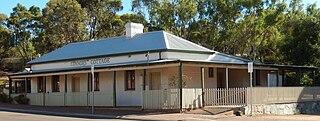
Connor's Cottage is situated on Piesse Street in Toodyay, Western Australia.

West Toodyay was the original location of the town of Toodyay, Western Australia. It is situated in the Toodyay valley, 85 kilometres (53 mi) north east of Perth. The Toodyay valley, discovered by Ensign Robert Dale in 1831, was opened up for settlement in 1836. The original site for the town of Toodyay was determined in 1836 and its boundaries were finalized 1838. The first survey of the town was carried out in 1849. After several serious floods, the decision was made to move the town of Toodyay to higher ground. In 1860, the new town of Newcastle was established 3 miles (4.8 km) further upstream. Newcastle was renamed in 1910 to Toodyay, and the original site became known as West Toodyay.
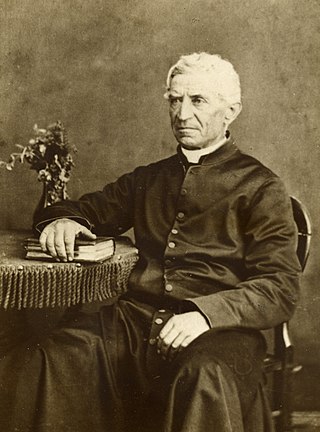
Canon Raffaele Martelli was Toodyay's first Catholic priest. He was a scholarly and gentle man who was much loved by settlers of all faiths. Martelli did not keep a diary, but his personality and humour shines through his regular correspondence with his friend Bishop Rosendo Salvado of New Norcia. His letters from Toodyay reveal the day-to-day travails of a priest who started out with no house or church. He had to rely on the goodwill of his parishioners for a roof over his head and food on the table, while a pair of woollen winter socks from Salvado brought him untold joy.
Owen Hackett (1809–1862) was one of a number of Enrolled Pensioner Guards (EPGs) that came to the Swan River Colony between 1850 and 1868. Their role was to guard and oversee the work of the prisoners transported to Western Australia.
Francis Kirk was one of a number of Enrolled Pensioner Guards (EPGs) who came to the Swan River Colony between 1850 and 1868, to guard and oversee the work of the prisoners transported to Western Australia.
David Gailey (1807–1881) was one of a number of Enrolled Pensioner Guards (EPGs) who came to the Swan River Colony between 1850 and 1868. Their role was to guard and oversee the work of the prisoners transported to Western Australia.
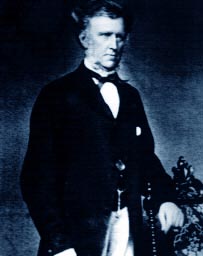
In 1851, the Toodyay Convict Hiring Depot was set up in the original township of Toodyay, now called West Toodyay. Temporary accommodation for the Enrolled Pensioner Guards was also constructed and surveys were carried out to enable more permanent accommodation to be built close by. The Enrolled Pensioner Guards were men who had either completed their duty of service or who had sustained injury while on active service. They had then volunteered as guards on the ships transporting convicts to Western Australia. Once the men were released from permanent duty, other duties of a peace keeping or military nature were expected of them. Many of these men became warders in charge of convicts.

The Church of Sancta Maria was the first Roman Catholic church built in the original townsite of Toodyay in Western Australia. It was consecrated in 1859, and served as church, priest's residence, and schoolhouse for the Toodyay Valley Catholic School. It later housed the Toodyay Valley government school.

Eliza's Cottage is a historic building in the York area of Western Australia.

Everett's Cottage is the only remaining building from the original township of old Toodyay, now known as West Toodyay, in Western Australia. Situated in North Street on the three-acre allotment of Suburban Lot 1, it stands immediately behind the site of the former Queen's Head Hotel. Suburban Lot 1 was registered to James Everett on 3 July 1860.
Construction of the new Toodyay Convict Hiring Depot began in February 1852 and was completed by 1856. The depot was closed in 1872. The site chosen, Avon Location 110, was an area of Crown land measuring just over 45 acres (18 ha). It was situated approximately 3 miles (4.8 km) upstream from the site of the previous Toodyay Convict Hiring Depot (1851) located at the Toodyay townsite. The previous depot had only ever been a temporary arrangement born of necessity when accommodation was required at short notice. The new depot site was surveyed by Francis Thomas Gregory in 1852.

The Pensioner Guard Cottage is a historic building in the Perth suburb of Bassendean, Western Australia. It is the oldest building in Bassendean, built between 1855 and 1857 by ticket of leave convicts staying at the Guildford convict depot. It was built with a group of three other similar cottages in Bassendean whose purpose was to house Pensioner Guards. In 1893, a house was built adjacent to the cottage. The other three cottages were demolished during the first half of the 20th century, and the house was significantly expanded in 1952.

















